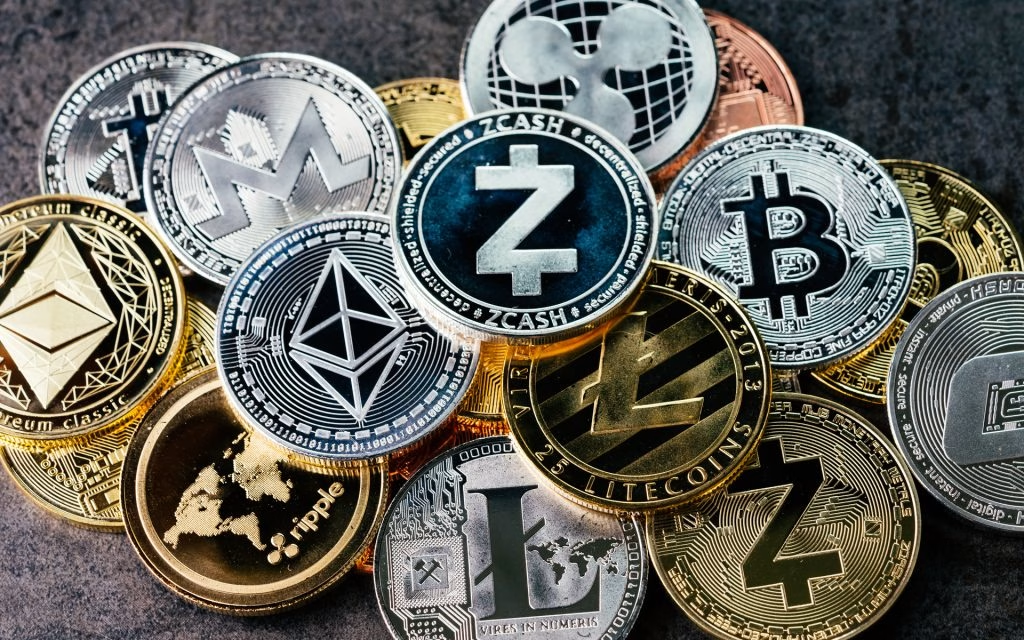Investing in Altcoins for Beginners: Strategies, Tips, and Resources
Investing in Altcoins for Beginners – In recent years, cryptocurrencies have gathered significant attention, with coins like Bitcoin dominating discussions. However, the crypto market is vast, encompassing thousands of alternative cryptocurrencies, commonly referred to as altcoins. For beginners looking to invest in altcoins, the wealth of options can be both exciting and overwhelming. This article provides a comprehensive guide to help newcomers dive into the world of altcoin investments.

What Are Altcoins?
Altcoins refer to any cryptocurrency other than Bitcoin. The term encompasses various cryptocurrencies, from popular options like Ethereum (ETH) and Litecoin (LTC) to lesser-known coins with niche use cases. While Bitcoin is often seen as a store of value, many altcoins aim to improve upon certain aspects of blockchain technology or serve specific functions.

Why Invest in Altcoins?
Investing in altcoins can present opportunities for substantial returns, making them an attractive option for many investors:
- Growth Potential: Many altcoins are in their early stages, and early investments can yield high returns as the projects develop.
- Diverse Portfolio: Investing in a variety of altcoins can help diversify your portfolio, reducing risk compared to investing solely in Bitcoin.
- Unique Use Cases: Each altcoin typically has a unique value proposition or application, which may cater to specific markets or needs, offering further investment opportunities.

Getting Started: How to Invest in Altcoins
1. Educate Yourself
Before making any investments, it’s essential to educate yourself about cryptocurrencies and the market landscape. Familiarize yourself with terms, concepts, and the technology behind cryptocurrencies. Useful resources include:
- CoinMarketCap: A comprehensive resource for tracking cryptocurrency prices and market capitalization.
- Investopedia: Offers educational articles on basic and advanced cryptocurrency concepts.
2. Choose a Secure Wallet
For any altcoin investment, you’ll need a safe place to store your assets. Cryptocurrency wallets come in various forms:
- Hardware Wallets: Physical devices that store your cryptocurrencies offline, providing high security (e.g., Ledger, Trezor).
- Software Wallets: Applications that store your cryptocurrencies online or on mobile devices, offering more accessibility but potentially less security (e.g., Exodus, Atomic Wallet).
3. Research Altcoins
Not all altcoins are created equal. Conduct thorough research before investing. Key factors to consider include:
- Market Capitalization: Indicates a coin’s size and stability; larger market caps often suggest more established projects.
- Whitepapers: Most altcoins have a whitepaper detailing their purpose, technology, and roadmap. Review these documents to understand the project’s viability.
- Community and Development Activity: Active development teams and thriving communities can indicate strong project backing and longevity.
4. Choose a Crypto Exchange
A cryptocurrency exchange is where you can buy and sell altcoins. Popular exchanges include:
- Binance: Known for its extensive list of altcoins and high liquidity.
- Coinbase: A beginner-friendly platform supporting several altcoins and an easy purchase process.
- Kraken: Offers a larger selection of altcoins and advanced trading features.
5. Start Small and Diversify
As a beginner, consider starting with a small amount, which allows you to learn without risking substantial capital. Diversification can help manage risk; don’t put all your funds into one altcoin. Consider investing in a mix of established coins and promising smaller projects to balance your portfolio.
6. Keep Track of Your Investments
Utilize portfolio tracking apps like CoinTracking or Blockfolio to monitor your investments. These apps can help you understand performance, manage tax implications, and provide insights into your trading habits.
Strategies for Investing in Altcoins
1. Long-term Hold (HODL)
Investors often buy altcoins and hold them for an extended period, betting on long-term growth. This strategy is ideal for those who believe in the fundamental value of the cryptocurrency and are less concerned about short-term volatility.
2. Swing Trading
This strategy involves buying and selling altcoins based on short to medium-term market trends. Swing traders look to capitalize on price movements and may take advantage of technical analysis tools to time their trades.
3. Dollar-Cost Averaging
By investing fixed amounts in altcoins at regular intervals, investors can reduce the impact of volatility. This method allows you to buy more coins when prices are low and fewer when prices are high.
Common Mistakes to Avoid
- FOMO (Fear of Missing Out): Don’t let emotions drive your investments. Conduct your research and avoid purchasing altcoins just because they’re trending.
- Lack of Research: Always research before investing. Investing in an altcoin without understanding it could lead to significant losses.
- Ignoring Security: Protect your investments by using secure wallets, enabling two-factor authentication, and being vigilant of phishing attempts.
Conclusion
Investing in altcoins can present significant opportunities for beginners willing to educate themselves and conduct thorough research. By understanding the market, using secure wallets, and implementing sound strategies, newcomers can successfully navigate the complexities of altcoin investments.
As you venture into the world of altcoins, remember that the crypto landscape is ever-changing. Stay informed by regularly following crypto news and updates from reputable sources like CoinDesk and CryptoSlate.
By adhering to these guidelines and staying informed, you’ll be better positioned to make strategic investment decisions in the exciting realm of altcoins. Happy investing!
Outgoing Links
Incoming Links
- Link from internal pages such as homepage, other relevant articles, or financial education sections on Trading Market Signals.








